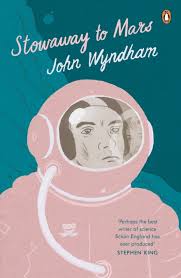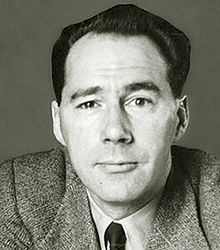It has also been published as ‘Planet Plane’ and ‘The Space Machine’ under the name John Beynon.
Genre: Sy Fy
GoodReads meta-data is 189 pages rated 3.23 by 525 litizens.

Verdict: What a relief, it has punctuation.
In far distant 1981 there have been Moon orbits but no landings. Why bother, there is nothing there but moon rocks. George Soros has put up millions as a prize for the first flight to and from Mars. Some have tried and failed. Pundits are sure spaceflight is impossible, and publish their opinions as facts on Faux News where Soros is likened to satan since both words start with ’S.’ It was ever thus.
Dale Curtance of the Boeing family builds a rocket in his backyard to win the prize. He is motivated by glory since he already has enough money to build as many rockets as he would like.
Dale is every director’s leading man, fearless, chiseled chin, handsome, genial, sexist, and quick with a shooting iron. He assembles a crew. There is an ageing doctor, an annoying journalist, a navigator who has never been out in space before, and an engineer who is permanently angry, and a stowaway they soon learn. What a carefully picked crew! The doctor will study the flora and fauna. The journalist will keep a factual log. (Fiction to be sure.) The navigator does nothing. The engineer sulks. Dale is fully occupied with chin maintenance. Then the Gloria Mundi blasts off for three-month trip to Mars where they will land and from which they hope to return.
The stowaway is Joan who has come to help. Help? How? By translating Martian. Huh? It seems is a six-legged machine showed up at her father’s farm and she learned Martian from it. Well, so she asserts since no else but Joan and Dad saw the contraption. Those two were sure it was not of this world. That it was intelligent. That….. It did not communicate and yet it did. So goes the circle. Then it vaporised itself. (If only Faux News would do that.) They were convinced it is/was an ambassador from Mars. Having studied the markings on the machine, Joan now feels qualified to translate from Martian. She qualifies for President Tiny’s cabinet with that grasp of facts.
The 1930s sexism is piled on without remorse. Joan is belittled, assaulted, patronised, insulted, and still expected to clean the coffee cups. In fact, this oppression is so detailed, a reader might begin to suspect Wyndham of irony. Or is that too long a reach? Hmmm. See below.
Mid-flight there is a seminar on the relationship between man and machine, and that is man, not woman. It is superficial, vague, and unfocussed enough to be one of those panel discussions on the ABC. They never once refer to the spaceship in which they ride as a machine. Indeed, there is no reason for them to blast off if this is all they have to talk about. Though it becomes relevant, sorta when they get to Mars.
Mars is almost entirely populated by AI machines because the human-like Martians are dying off. There is a declining birth rate, no doubt due to Hillary Clinton, and ever lower resistance to disease, thanks to the anti-vaxxers among them. The remaining Martians see the continuation of the machines as the natural order of evolution and accept it. One tries to explain this attitude to an Earthling, who goes all Luddite and chews an Opal card. This is the most interesting part of the book, but Wyndham had not yet hit his stride and it is talky, talky, and talky. In it, however, Joan is proven right about much for which earlier she was ridiculed by the blokes. That is why I wondered if there was irony in the way the misogyny was laid on. (Albeit there are loose ends, i.e., I never did figure out who sent the machine to Joan’s farm.)
John Wyndham Parkes Lucas Beynon Harris

was the son of a barrister. After trying a number of careers, including farming, lawyering, and advertising, he started writing short stories in 1925. This book was fifteen years before ‘Day of the Triffads’ (1951) and nearly twenty years before ‘The Midwich Cuckoos’ (1957), which became the film ‘The Village of the Damned’ (1960). In these he certainly hit his stride. Each is unique and unforgettable.
Skip to content
